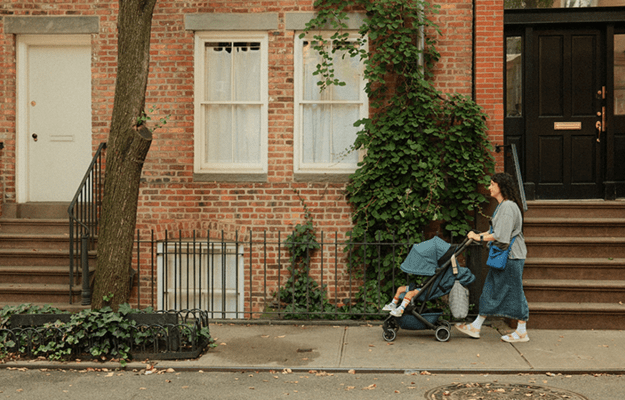
Rawpixel.com/Shutterstock
Has the Increase in Charter Schools Decreased School Segregation or Made it Worse?
Where a person lives and which schools they attend are key factors in many life outcomes, including their economic mobility and long-term health. Americans’ access to high-quality schools is largely dependent on their neighborhood because most attend their local public schools.
The availability and rating of a neighborhood’s schools often influence where people choose to live. Families with higher incomes and white families opt to live in well-resourced areas with highly rated schools, reinforcing the residential segregation created by racist housing policies like redlining and exclusionary zoning.
School and neighborhood segregation are linked; segregated neighborhoods are more likely to have segregated schools. Segregation in schools can then lead to greater disparities in school funding and educational opportunities for Black and Latinx students.
A schooling option blending elements of both public and private schools has emerged that can greatly affect the established neighborhood and school connection: charter schools. Promoted as a way to decrease segregation, research shows charter schools may actually increase it.
What are charter schools?
Since the first charter school in the Unites States opened in Minnesota in 1992, charter schools have seen steady growth in both the number of charter schools and the total number of enrolled students. They now enroll more than 3.4 million students, or about 7 percent of total public school students.
Though charter schools are publicly funded and don’t charge tuition, they differ from traditional public schools because they are operated by independent groups rather than local or state governments. Charter schools are exempt from certain state and local regulations and, instead, are required to meet the expectations laid out in their “charter”—the contract with their district or state.
Charter schools may also weaken the link between geography and school choice; students aren’t assigned to charter schools based on where they live. Instead, families request a seat in the charter school of their choice. While it varies by state, most charter schools are required to enroll every student that applies or admit through a random lottery if applications exceed their capacity.
It is also important to distinguish charter schools from magnet schools, which also allow families to voluntarily enroll in schools but are still operated by the school district. Magnet schools were founded specifically to reduce segregation and charter schools were founded on the principle that increased choice and free market principles would create competition and increase school quality overall.
How do charter schools affect school segregation?
Charter schools’ effects on both racial and economic segregation within the public school system have come under scrutiny. Charter schools have been promoted as way to reduce segregation and create diverse schools, but some research suggests charter schools may actually increase school segregation in most cases:
- One nationwide study looking at between-grade differences of charter schools and traditional public schools found that charter school growth led to a small overall increase in racial and ethnic school segregation in public schools. The increase in segregation was most prominent in urban neighborhoods of color and white suburban districts.
- Looking at specifically white-Black school segregation through census data, one analysis found that proportional to charter school growth within the metropolitan area, metropolitan school districts saw a decrease in white-Black residential segregation but an increase in white-Black school segregation, suggesting that while housing segregation decreased, charter schools may have maintained segregation.
- A study that looked at core-based statistical area–level data found that the share of white students in charter schools was higher in areas where the corresponding traditional public schools had high numbers of Black students, suggesting that white households may be utilizing charter schools to avoid sending their children to integrated local schools.
- Looking at socioeconomic school segregation, one study using district-level panel data found that an increase in charter schools was correlated with an increase of within-district segregation of students with low household incomes.
Though there isn’t one direct reason why charter schools lead to increased segregation, individual charter schools have been found to use tactics such as marketing toward more affluent or whiter neighborhoods and using discipline policies to influence the makeup of the school’s student body.
What can be done to reduce segregation with charter schools?
Charter schools’ current operations can exacerbate school segregation within districts. Policymakers and school districts interested in using charter schools to reduce school segregation could consider the following strategies:
- Local school districts could adopt “diverse by design” charter school policies, using mechanisms such as weighted lotteries or diversity-conscious admissions algorithms to ensure diverse student bodies.
- The federal government could offer incentives through its Charter Schools Program to reward schools that implement integration efforts.
- City or school officials could implement policies that limit charter schools’ growth, similar to those found New York City, where one study found charter schools in this more-managed environment correlated with a small reduction in school segregation.
- School districts could offer “controlled school choice” to prioritize admitting students from low-income families or students of color so they receive seat offers at sought-after schools before other groups.
- In areas with many charter schools, city or local governments could offer transportation vouchers for low-income parents to help increase their access to quality schools
Because schools and neighborhoods are vital to a person’s entire life trajectory, ensuring all students have access to high-quality schools should be a priority. In their current state, charter schools don’t appear to reduce neighborhood and school segregation. But with the right conditions, they could present an opportunity for students to attend high-quality, integrated schools.


